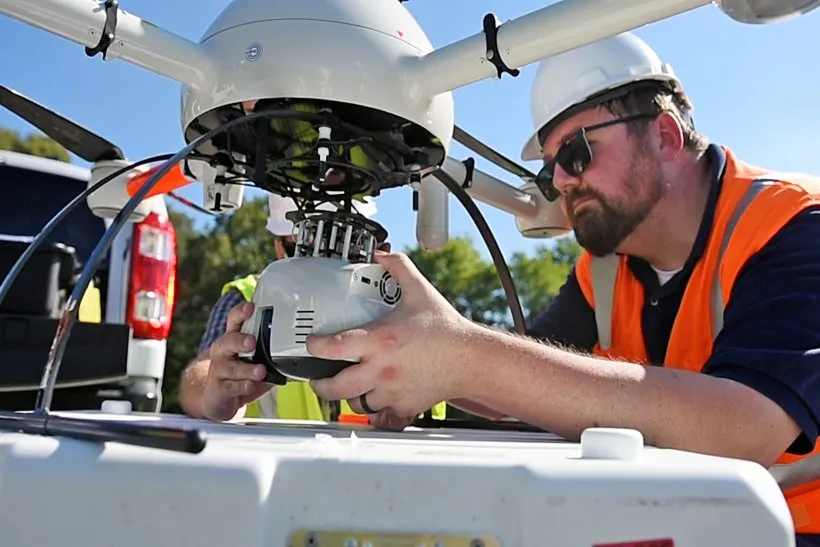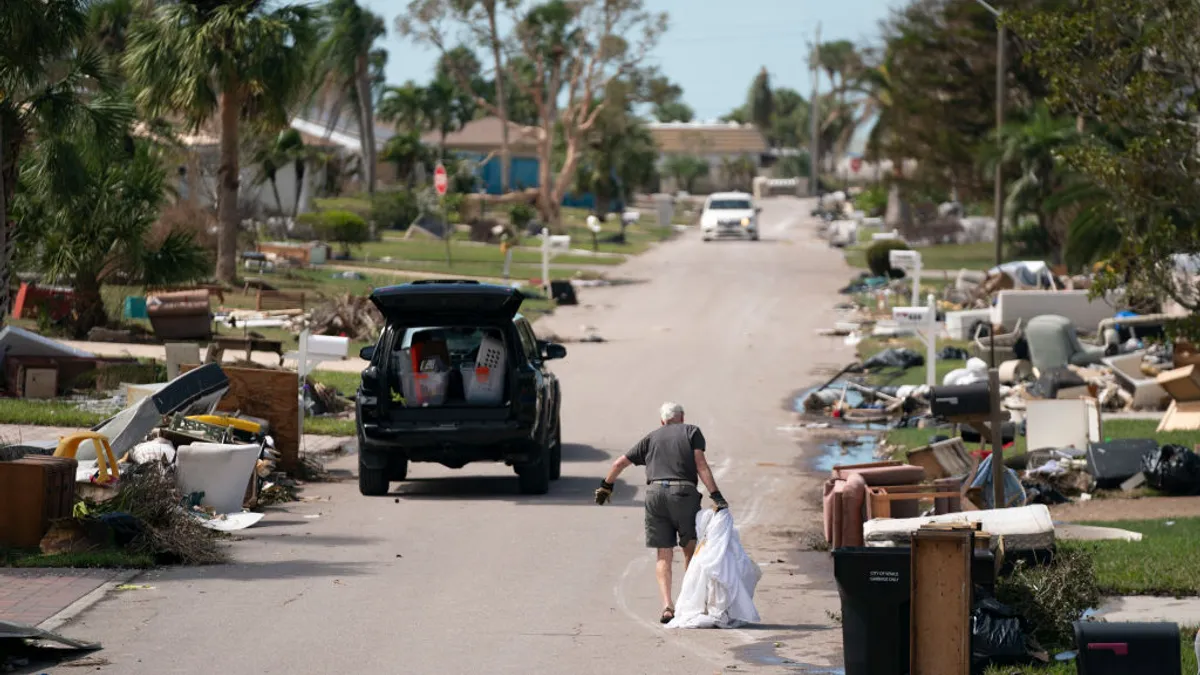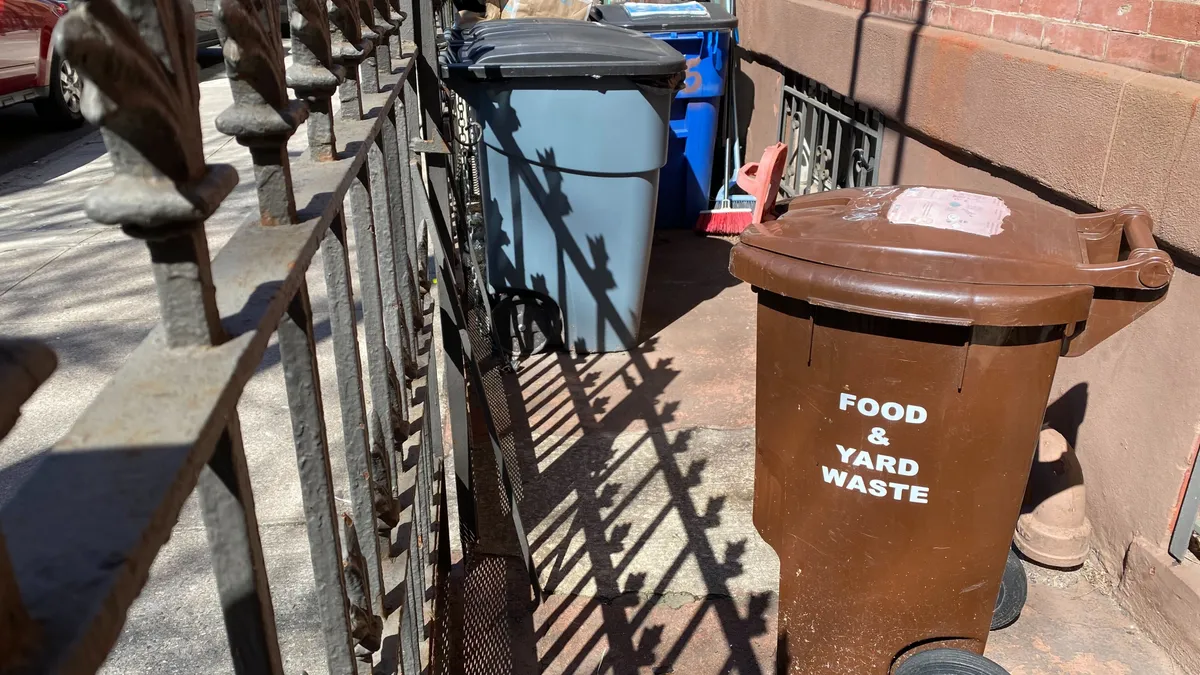U.S. landfill operators are continuing to determine the extent of the current hurricane season’s impact on operations and volumes. Meanwhile, the National Waste & Recycling Association is challenging the U.S. EPA's calculation methods for landfill emissions in court, and multiple local expansion projects are underway.
Here’s a look at some of the most notable landfill developments in recent weeks:
NWRA sues EPA over landfill emissions equations
The industry trade group filed a lawsuit challenging an update to the method the EPA uses to calculate landfill emissions, E&E News first reported. The suit seeks revisions to the update, and comes after NWRA filed joint comments with the Solid Waste Association of North America on the update earlier this year. SWANA is not a party to the lawsuit.
The text at issue, known as the Compilation of Air Pollutant Emission Factors, or AP-42, provides equations and corresponding explanations for measuring emissions from more than 200 types of air pollution sources. The chapter on landfill emissions was originally developed in 1998. The agency last acknowledged its equations were out of date in 2008 but only updated them on Aug. 15, after a public comment period.
In their prior comments, NWRA and SWANA took issue with several aspects of the update, including the factors used to determine non-methane organic compound concentrations in landfill gas. They also pushed back on the EPA's decision to use percentage points, rather than ranges, for common landfill gas constituents such as methane and carbon dioxide. They argued there is sufficient variability in landfill gas contents due to geography, weather and other factors that the EPA's proposed equations risked oversimplifying and misrepresenting emissions.
They also noted that regulations like the New Source Performance Standards and Emissions Guidelines for new and existing landfills sometimes reference the AP-42 equations when setting regulatory limits. In their view, inaccurate equations in this chapter could create problematic regulations down the line, especially as the EPA said it could update NSPS and EG regulations for MSW landfills next year.
In its response to commenters, the EPA argued the AP-42 equations should not necessarily be used for hard regulatory limits, and instead are meant as estimates. It made some technical corrections asked for by the industry groups.
NWRA’s lawsuit, which is a petition for reconsideration, seeks to challenge the landfill gas collection efficiency values. NWRA previously filed a petition of reconsideration for those values under the EPA’s Greenhouse Gas Reporting Program, which the agency agreed to on Aug. 8.
“NWRA supports EPA’s goal of ensuring data quality in the calculation of greenhouse gas emissions from landfills,” said Michael E. Hoffman, president and CEO of NWRA, in an emailed statement.
Waste companies report minor hurricane effects during Q3 earnings calls
Publicly traded waste companies are still determining the business and operational impacts from recent hurricanes in September and October, but executives said during recent quarterly earnings calls that this isn’t expected to significantly change their outlooks for Q4 and beyond.
Some companies expect to see incremental volumes from hurricane-related cleanup activity, but couldn’t yet quantify them. Waste Connections said such volumes would be “additive” to their Q4 outlook and CEO Ron Mittelstaedt noted that their landfill locations were likely well-positioned for notable volumes. In 2022, the company reported about $15 million in incremental revenue at its Western Florida landfill from the effects of Hurricane Ian.
Meanwhile, Republic Services CEO Jon Vander Ark said any additional volumes would be “icing on the cake,” but the company’s main focus was getting customers back on their feet after the storms. GFL Environmental executives said they anticipate some kind of benefit from storm waste, which could help offset softness in its special waste sector in the future.
Hurricanes Helene and Milton also caused operational issues. Helene affected Waste Connections’ roll-off business in September, causing revenue for that sector to drop 5% year over year. Costs from hurricane preparations and “related impacts” caused a slight drag on quarterly earnings before interest, taxes, depreciation and amortization.
Enviri reported its Harsco Rail segment experienced production and shipment delays from a manufacturing facility in Columbia, South Carolina, which impacted the segment’s adjusted EBITDA for the quarter by between $1 million and $2 million, said CEO Nick Grasberger.
Stericycle reported temporary “minimal damage” to its facilities, while WM said its assets were “largely untouched.”
Executives also applauded frontline workers for restoring service and helping customers during challenging conditions.
Florida-based Waste Pro, which is a private company, also discussed its own response efforts and community support in recent weeks. WM also announced a $1 million donation to support local relief organizations.
Technology spotlight
It previously took days for engineers from the agency’s Office of Environmental Management to survey the 300,000-square-foot site. The drones, which use light detection and ranging technology, can also gather more data points. DOE also says it greatly improves employee safety by limiting potential hazards during walking surveys.

Expansion news
- The Plainfield Township Board of Supervisors in Pennsylvania recently approved a rezoning request by WM that could expand its Grand Central Landfill site by more than 200 acres, including 81 acres for waste disposal. This could extend the site’s capacity by an estimated 20 years. The project has faced pushback in the past, and further approvals are required. (WFMZ)
- Republic Services recently submitted a revised application to expand its Coffin Butte Landfill in Benton County, Oregon, which would add 70 acres and six years of capacity. Republic’s proposal has faced pushback in the past, though the company says this revised application includes new information about managing issues such as odor and noise. (Philomath News)
- Rumpke Waste & Recycling is in the process of expanding the Athens-Hocking Landfill in Nelsonville, Ohio, by four acres. This could add four years of capacity to the site, starting in 2025. (Athens County Independent)
- Voters in Pitkin County, Colorado, approved a proposal to fund the expansion of a county-owned landfill via a $22 million bond. The expansion is projected to add 70 years of capacity. (Aspen Daily News)
- Montana’s Department of Environmental Quality is assessing a proposed 17-acre expansion of the Lincoln County Landfill, which could extend its lifespan by an estimated 29 years. The site is currently set to reach capacity in 2027. (The Western News)
- The Jefferson County Board of Commissioners in Idaho recently approved a $1 million purchase of 36.6 acres adjacent to the County Line Landfill. The area will be used in part for a future landfill expansion. (Post Register)
- The publicly owned Superior Landfill in Minnesota officially closed for residential use in October. It remains open to city collection trucks, Western Lake Superior Sanitary District and commercial haulers. The site is slated to reach capacity in 2026 and no longer has space to safely accommodate two tipping locations. (Superior Telegram)
Editor’s note: This story has been updated to clarify attribution for a statement from NWRA.





















